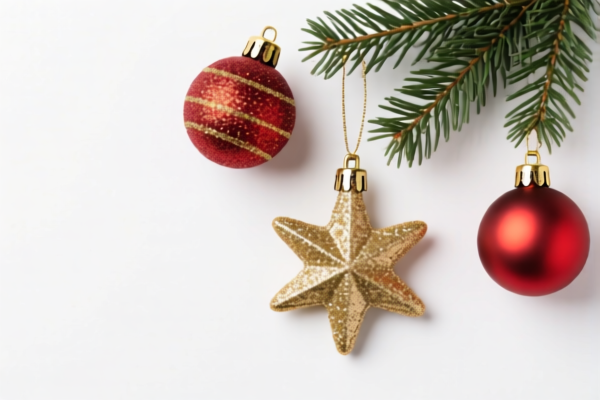| HS Code | Official Doc | Tariff Rate | Origin | Destination | Effective Date |
|---|---|---|---|---|---|
| 6702102000 | Doc | 38.4% | CN | US | 2025-05-12 |
| 6702906500 | Doc | 54.5% | CN | US | 2025-05-12 |
| 6701003000 | Doc | 59.7% | CN | US | 2025-05-12 |
| 6701006000 | Doc | 59.7% | CN | US | 2025-05-12 |
| 3926400010 | Doc | 35.3% | CN | US | 2025-05-12 |
| 3923900080 | Doc | 58.0% | CN | US | 2025-05-12 |




Holiday Decorations
Holiday decorations are items used to celebrate various holidays, typically to create a festive atmosphere. These can range from simple, handmade crafts to elaborate, commercially produced displays. The specific decorations used vary widely depending on the holiday, cultural traditions, and personal preferences.
Materials
A broad spectrum of materials are employed in holiday decoration production. Common materials include:
- Plastics: Widely used for ornaments, lights, and larger figures due to durability and affordability. Polyvinyl chloride (PVC) is a frequent choice.
- Metals: Used for frameworks, ornament hangers, and some decorative pieces. Aluminum, iron, and steel are common.
- Glass: Traditional material for ornaments, particularly Christmas ornaments, known for its reflectivity and delicate appearance.
- Fabric: Used for banners, stockings, tablecloths, and other soft decorations. Common fabrics include felt, cotton, and velvet.
- Wood: Used for Nativity scenes, snowmen, and other rustic decorations.
- Paper & Cardboard: Employed for paper chains, lanterns, and DIY decorations.
- Natural Materials: Pine cones, evergreen branches, berries, and flowers are frequently used, especially in wreaths and centerpieces.
- Lights: Incandescent, LED, and fiber optic lights are used extensively to illuminate decorations.
Purpose
The primary purpose of holiday decorations is to:
- Create a Festive Atmosphere: Decorations contribute to the visual and emotional ambiance associated with a holiday.
- Express Cultural Traditions: Many decorations have historical or religious significance, reflecting specific customs.
- Personal Expression: Decorations allow individuals and families to showcase their style and creativity.
- Symbolic Representation: Certain decorations represent specific themes or beliefs associated with the holiday.
- Mark the Occasion: Decorations signal the arrival and celebration of a particular holiday.
Function
The function of holiday decorations varies based on the specific item:
- Illumination: Lights provide visibility and enhance the festive mood.
- Ornamentation: Ornaments and figurines add visual interest and symbolic meaning.
- Display: Larger decorations, such as inflatable figures or yard displays, create a focal point.
- Signaling: Banners and flags announce the holiday or celebration.
- Containment/Presentation: Stockings, advent calendars, and gift wrap serve a functional purpose alongside their decorative role.
Usage Scenarios
- Indoor Decoration: Christmas trees, wreaths, garlands, ornaments, stockings, table centerpieces, and window displays.
- Outdoor Decoration: Yard inflatables, string lights, illuminated figures, wreaths, and garden displays.
- Religious Displays: Nativity scenes, menorahs, and other items reflecting religious traditions.
- Public Spaces: City squares, shopping malls, and businesses often feature large-scale holiday displays.
- Personal Celebrations: Decorations used for private parties and gatherings.
Common Types (categorized by holiday)
- Christmas: Christmas trees, ornaments, lights, wreaths, garlands, stockings, advent calendars, Nativity scenes, gingerbread houses, candy canes, Christmas villages.
- Halloween: Jack-o'-lanterns, pumpkins, spiderwebs, skeletons, ghosts, bats, scarecrows, costumes, spooky lights.
- Easter: Easter eggs, Easter baskets, Easter bunnies, chicks, pastel-colored decorations, lilies.
- Thanksgiving: Cornucopias, pumpkins, gourds, fall leaves, turkeys, harvest-themed decorations.
- Hanukkah: Menorahs, dreidels, gelt, blue and silver decorations.
- Valentine's Day: Hearts, roses, red and pink decorations.
- St. Patrick's Day: Shamrocks, leprechauns, green decorations.
- Independence Day (4th of July): Flags, red, white, and blue decorations, fireworks-themed decorations.
Holiday decorations can encompass a variety of items made from different materials and serving ornamental purposes. Based on the provided information, the following HS codes may be relevant:
-
6702102000: This HS code covers Artificial flowers, foliage and fruit and parts thereof; articles made of artificial flowers, foliage or fruit: Of plastics: Assembled by binding with flexible materials such as wire, paper, textile materials, or foil, or by gluing or by similar methods. If the holiday decorations are primarily composed of plastic artificial flowers, foliage, or fruit assembled using methods like binding or gluing, this code applies. The total tax rate is 38.4%.
-
6702906500: This HS code covers Artificial flowers, foliage and fruit and parts thereof; articles made of artificial flowers, foliage or fruit: Of other materials: Other: Other. If the holiday decorations are made of materials other than plastics, this code is applicable. The total tax rate is 54.5%.
-
3926400010: This HS code covers Other articles of plastics and articles of other materials of headings 3901 to 3914: Statuettes and other ornamental articles Bows and similar products for decorative purposes including gift-packaging and the like. If the holiday decorations consist of plastic statuettes, ornamental articles, or decorative bows used for gift packaging, this code is relevant. The total tax rate is 35.3%.
-
3923900080: This HS code covers Articles for the conveyance or packing of goods, of plastics; stoppers, lids, caps and other closures, of plastics: Other Other. If the holiday decorations include plastic articles used for packing or conveyance, or plastic stoppers, lids, or caps, this code may apply. The total tax rate is 58.0%.
Regarding HS code 6702102000 and 6702906500, the classification depends on the primary material used in the decorations.
Regarding HS code 3926400010, please note that these items are considered ornamental articles for decorative purposes.
Customer Reviews
No reviews yet.